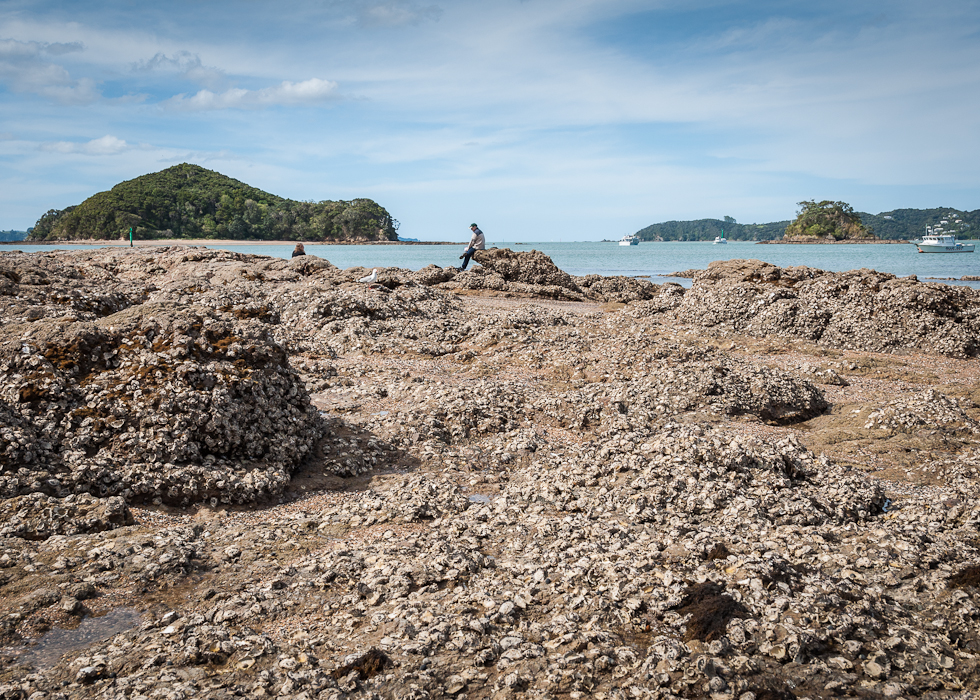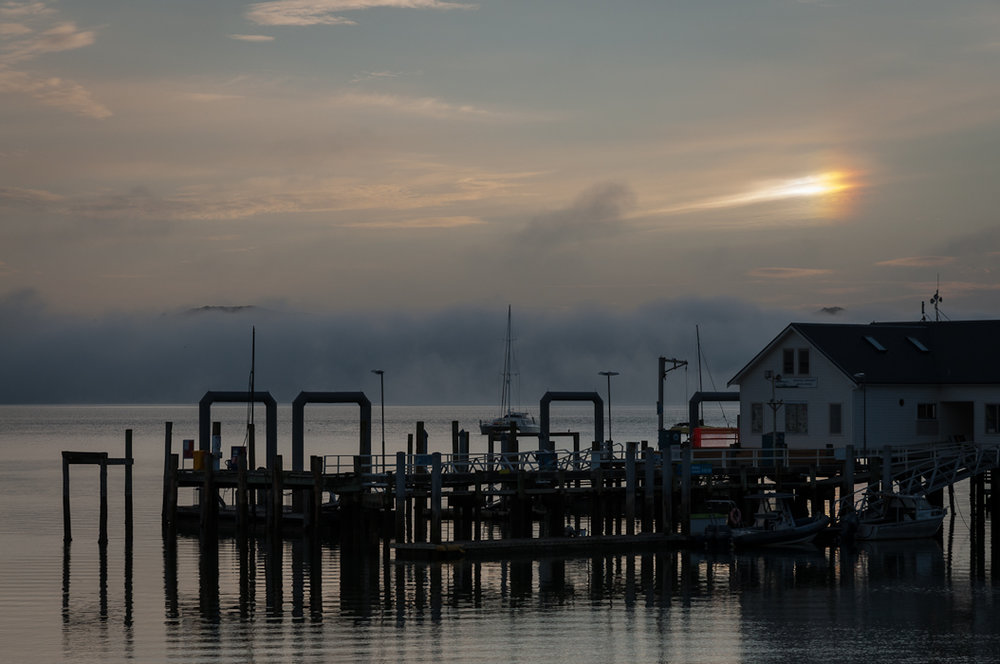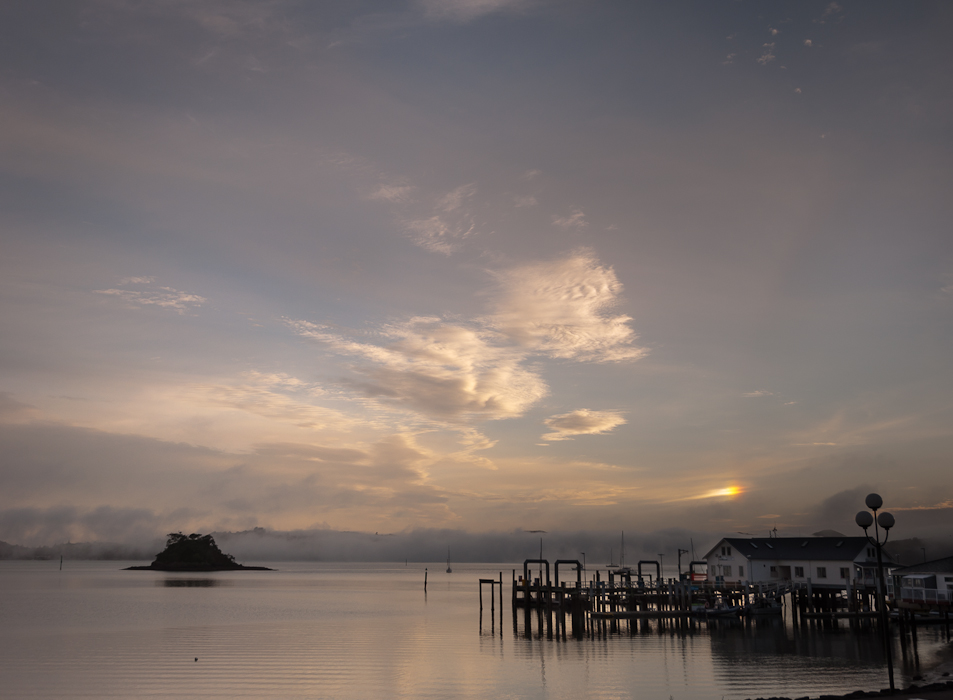I chanced upon this sculpture in Russell, a historic settlement in the Bay of Islands across the bay from Paihia. The plaque beside it read:
The plaque beside it read:
"SWORDS INTO PLOUGHSHARES
The Pou-ihi is a cultural recognition of conservation and its value in Maori society. The Tangata whenua (Maori people) with the assistance of the Maori and South Pacific Arts Council 1988 gifted this carving to the Bay of Islands Maritime and Historic Park.
The pillar or Pou-ihi shows only half a person, Rongo who represents the portion of people who recognise and uphold the values of conservation. Rongo's upraised left arm holds a ko (digging stick) which symbolises the concepts and instruments that will bring about the healing of Papatuanuku (Mother Earth).
The carving faces west so that symbolically like the sun it rises to shine the light of conservation knowledge upon those in darkness."
Russell, originally Kororareka, is a small and picturesque settlement which was a site of early contact between Maori and tauiwi (nonMaori) from the early 1800's. With a mixed bunch of arrivals - whalers, sailors, missionaries, escaped convicts from Australia, settlers - it had a reputation as a lawless and disreputable port ("the Hellhole of the Pacific"), but it was also a place where prayerbooks in Maori were printed and bound. Nearby, just across the water, was the setting for the signing on February 6 1840 of the Treaty of Waitangi between the British crown and Maori people, recognising Maori ownership of their lands and other properties and guaranteeing them the rights of British subjects. Russell was too unsavory in reputation so the first capital was established (briefly) nearby but then moved to Auckland. There was subsequent conflict that led to the sacking of Russell in 1845, but the church and mission were spared and still survive, and there are also a number of colonial buildings along the waterfront.
Nowadays it is a little port for tourists, big game fisherfolk, holidaymakers, and passengers who ferry in from very large cruise ships. It is a pretty place to visit, and a suitable place to think about conservation and how we live together and care for our environment.
This sculpture sat quietly in a little park, a rather subtle reminder of big issues that we all face.


















